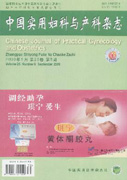The age of onset of gynecological malignant tumors tends to be younger,more and more patients have fertility requirements when they are diagnosed with cancer.Different cancer treatments have a certain impact on the fertility of patients, application of assisted reproductive technology(ART)can help part of the patients fulfill their fertility wish. In this paper, the methods and safety of ART for three gynecological malignant tumors are discussed.

